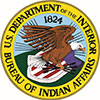The Organization of American States
The Organization of American States (OAS) was established to achieve among its member states peace and justice, to promote solidarity, to strengthen their collaboration, and to defend their sovereignty, their territorial integrity and their independence. Today, the OAS brings together all 35 independent states of the Americas and constitutes the main political, juridical, and social governmental forum in the hemisphere. In addition, it has granted permanent observer status to 69 states, as well as to the European Union. The organization uses a four-pronged approach to effectively implement its essential purposes, based on its main pillars: democracy, human rights, security, and development.
Efforts within the OAS to support the development of Indigenous tourism in the Americas have increasingly gained traction. The Twenty-Third Inter American Congress of Ministers and High-level Authorities of Tourism held in Lima, Peru, in 2015 focused on community-based rural tourism and included presentations on Indigenous tourism in member states, particularly in South America where tourism can be used to promote economic growth and social inclusion. Efforts to establish a Community-Based Rural Tourism Network of the Americas, led by Peru, provide a promising opportunity to incorporate elements of Indigenous tourism.
The George Washington University’s International Institute of Tourism Studies
As a global leader in tourism education and research, The George Washington University’s International Institute of Tourism Studies has been guiding businesses, communities, governments and nonprofits toward sustainability for more than thirty years. They advance critical industry issues through thought leadership and research, and provide professional-level certificate programs, courses and workshops in destination management and cultural heritage tourism.
The International Institute of Tourism Studies works with tribal communities to develop their tourism potential, helping them to take stock of and develop their assets, plan and build their capacity and promote their offerings. Areas of focus include tribal tourism governance, capacity building and product development.
In collaboration with the Planeterra Foundation of G Adventures, the International Institute of Tourism Studies produced Indigenous People and the Travel Industry, comprehensive guidelines for travel companies working with Indigenous communities. They also helped to develop an economic plan for tourism development for the Turtle Mountain Band of Chippewa Indians, a strategic plan for job creation and tourism investment and development for the Choctaw Nation, and a tourism office for the Crow Tribe, and they conducted an assessment of tourism potential for five tribal communities in North Dakota and helped them to set up a regional tourism alliance.
In partnership with the American Indian Alaska Native Tourism Association, the institute offers an online six-week certificate program: The Professional Certificate in Cultural Heritage Tourism designed to provide tourism entrepreneurs and community leaders with the tools to identify and develop local assets that would most appeal to tourists such as cooking and crafts workshops, nature walks, and historical sites.
The Bureau of Indian Affairs
The Bureau of Indian Affairs (BIA) is the oldest agency of the United States Department of the Interior. Established in 1824, the BIA currently provides services (directly or through contracts, grants, or compacts) to approximately 1.9 million American Indians and Alaska Natives. There are 573 federally recognized American Indian Tribes and Alaska Native Villages in the United States. The Bureau of Indian Affairs (BIA) is responsible for the administration and management of 55 million surface acres and 57 million acres of subsurface minerals estates held in trust by the United States for American Indian Tribes and Alaska Natives.
The mission of the Bureau of Indian Education (BIE) is to provide quality education opportunities from early childhood through life in accordance with the Tribes’ needs for cultural and economic well being and in keeping with the wide diversity of Indian Tribes and Alaska Native villages as distinct cultural and governmental entities. The Bureau considers the whole person (spiritual, mental, physical and cultural aspects). The BIE provides education services to approximately 42,000 Indian students.


